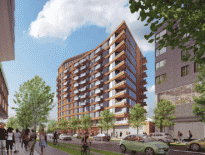Massachusetts’ Black households appear to have been left behind by a record jump in the nation’s homeownership rate, a new study by the National Association of Realtors has found, and the soaring price of homes is likely to blame.
While the rates among white Bay State households rose from 67 percent in 2018 to 69 percent in 2021 according to data presented in NAR’s 2020 and 2022 Snapshot of Race and Homebuying reports. At the same time, the rate for Massachusetts’ Black households went from 35 percent to 34 percent.
The state’s overall homeownership rate hit 62.7 percent according to Census Bureau data analyzed by the Federal Reserve Bank of St. Louis, a slight increase from the 62.4 percent rate the Census Bureau estimated in 2019. The NAR study did not include overall homeownership rates by state.
The NAR report was based on research the association’s economists did for its annual Profile of Home Buyers and Sellers report, and showed a record increase in the nation’s overall homeownership rate: a 130-basis point gain in one year, to 65.5 percent of all Americans.
However, the nationwide homeownership rate for Black Americans – 43.4 percent – trails behind that of a decade ago (44.2 percent in 2010). Conversely, White Americans (72.1 percent), Asian Americans (61.7 percent) and Hispanic Americans (51.1 percent) all achieved decade-long highs in homeownership in 2020, with the rate for Hispanic Americans setting a record and reaching above 50 percent for the first time
“As the gap in homeownership rates for Black and White Americans has widened, it is important to understand the unique challenges that minority home buyers face,” Jessica Lautz, NAR vice president of demographics and behavioral insights, said in a statement. “Housing affordability and low inventory has made it even more challenging for all buyers to enter into homeownership, but even more so for Black Americans.”
Within New England, far fewer Massachusetts Black families owned their own home last year compared to Black families in Connecticut (40 percent) and Rhode Island (41 percent), but more than in New Hampshire (35 percent), Vermont (19 percent) and Maine (19 percent).
Nadia Evangelou, NAR senior economist & director of forecasting, said in an emailed statement that this disparity likely is caused by the longstanding tightness in Massachusetts’ housing market, which drove the statewide median single-family sale price up to $510,000 last year according to The Warren Group, publisher of Banker & Tradesman.
“We actually estimated the effect of this dual phenomenon by race for each state. For example, a Black household earning about $75,000 annually can afford to buy 16 percent of the homes currently listed for sale in Massachusetts. This translates to 750 listings that are currently listed for sale for these households to buy. However, in Connecticut, that same Black household can afford to buy 34% of the homes currently listed for sale. This translates to 1,360 listings that they can afford to buy,” Evangelou said.
The problem is even worse for renter households, she added, with only 23 percent of Massachusetts renters able to afford to buy the “typical” home here, compared to 38 percent in New Hampshire and 31 percent in Connecticut.




 |
| 


